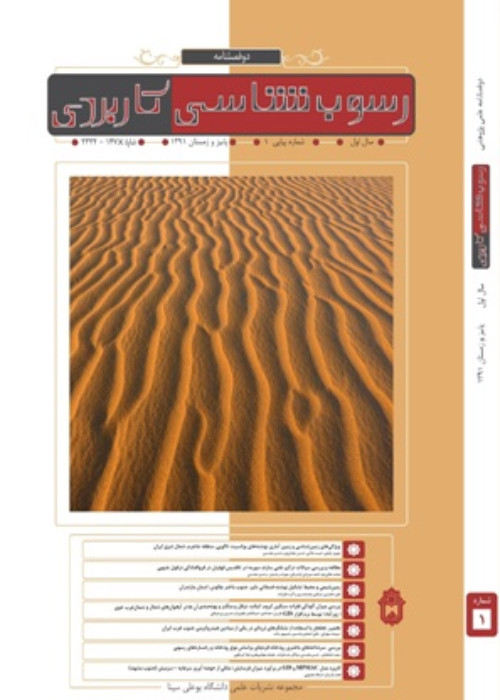Reservoir facies determination in carbonate rocks based on MICP curves and pore types in Dalan and Kangan formations, South Pars Gas field
Author(s):
Abstract:
Fluid movement in the reservoir rock depends on the surrounding pore system. MICP curves are applied for the reservoir rock evaluation, distinction between reservoir and non-reservoir rocks and pore system (interparticle and intraparticle pore spaces and pore throats) characterization. The MICP curves are used as an instrument for making a connection between the depositional and reservoir (the ability of fluid conduction) properties. In this study, capillary pressure curves are classified based on the pore system characteristics in order to make a relationship between depositional and reservoir properties. The classification was performed first by determining some parameters from the MICP curves. Then the parameters were classified using cluster analysis (MRGC). As a result six pore facies are defined in the reservoir rock and then the depositional rock fabric and the main pore types are determined in each pore facies by petrographic analysis. Eventually, air-water capillary pressure curves from centrifuge tests were studied and then were classified separately in order to determine the ability of reservoir rock to fluid conduction. The classification was performed based on the variations in capillary pressure in different water saturations. The effect of pore system characteristics on fluid saturation behavior has been determined in reservoir rock by comparing the result of pore facies analysis and the air-water capillary pressure curves. The compatibility of the centrifuge curves with pore facies is indicative of the importance of the pore types and pore system structure (particularly pore throats) in reservoir rock properties and saturation behavior. This research shows dissimilarities in the condition and types of test cause some differences in the results but capillary properties are affected strongly by the pore system. This method is applicable in reservoir studies and the classification of reservoir facies and it can be useful in decreasing the incompatibilities between geological facies and dynamic properties of the reservoir rock. In conclusion, pore system characteristics which is strongly affected by the variations in depositional fabric and diagenetic features, control the reservoir rock quality and fluid saturation behavior.
Keywords:
Language:
Persian
Published:
Applied Sedimentology, Volume:1 Issue: 2, 2014
Pages:
1 to 15
magiran.com/p1238371
دانلود و مطالعه متن این مقاله با یکی از روشهای زیر امکان پذیر است:
اشتراک شخصی
با عضویت و پرداخت آنلاین حق اشتراک یکساله به مبلغ 1,390,000ريال میتوانید 70 عنوان مطلب دانلود کنید!
اشتراک سازمانی
به کتابخانه دانشگاه یا محل کار خود پیشنهاد کنید تا اشتراک سازمانی این پایگاه را برای دسترسی نامحدود همه کاربران به متن مطالب تهیه نمایند!
توجه!
- حق عضویت دریافتی صرف حمایت از نشریات عضو و نگهداری، تکمیل و توسعه مگیران میشود.
- پرداخت حق اشتراک و دانلود مقالات اجازه بازنشر آن در سایر رسانههای چاپی و دیجیتال را به کاربر نمیدهد.
In order to view content subscription is required
Personal subscription
Subscribe magiran.com for 70 € euros via PayPal and download 70 articles during a year.
Organization subscription
Please contact us to subscribe your university or library for unlimited access!


